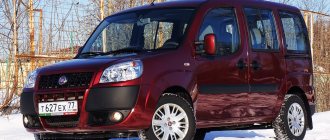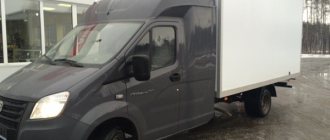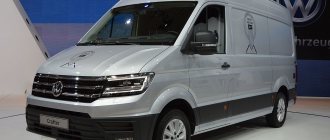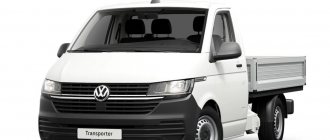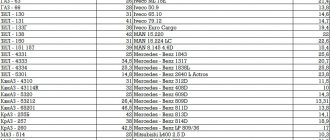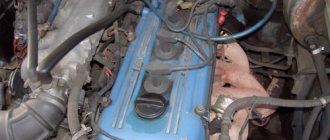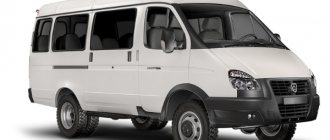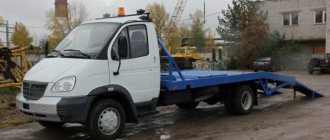Rated fuel consumption is one of the most informative and important characteristics of a car for the driver. This is what manufacturers often use to advertise and promote a particular new car model.
Among owners of used cars, it is considered acceptable to consume up to 10 liters of gasoline or diesel per 100 kilometers. In foreign countries, this indicator is indicated in miles, so recalculation into “native” units is often necessary. The fuel consumption tables available in this section of the site are considered very useful.
What does the fuel consumption indicator indicate? What does this characteristic mean? We are talking about hydrocarbon fuel consumption. For example, for an SUV the figure corresponds to 9.5 liters per 100 km. It is quite acceptable, primarily due to the weight and power of the car. The indicator can be reduced due to the following:
- use of energy recovery systems during braking;
- lightening the weight of the car when replacing body and chassis elements with innovative materials;
- engine improvements;
- replacing the exhaust system.
For new models, consumption of 6 l/100 km is considered quite a “cruising” figure, but it will be higher for heavy SUVs and pickups and lower for small hybrids. The necessary information can be found in the tables provided.
What to do if fuel consumption is higher than rated? If the car consumes more fuel and does not correspond to the nominal value indicated in the table, this means there is a malfunction. Experienced service center technicians will tell you how serious it is and how it can be eliminated. In some cases, tuning makes it possible to further optimize fuel consumption, but this is usually achieved by lightening the body structure or by replacing the engine. Professional automotive technicians can provide specific recommendations.
Renault Traffic fuel consumption ranges from 7.7 to 10.6 liters per 100 km.
Renault Trafic is available with the following fuel types: Diesel fuel, Regular gasoline (AI-92, AI-95).
Fuel consumption Renault Trafic restyling 2006, all-metal van, 2nd generation
| Engine capacity | Power | Transmission | Drive unit | Fuel | Consumption |
| 2.0 l | 90 hp | Manual transmission | front-wheel drive | Diesel fuel | 8,2 |
| 2.0 l | 114 hp | robot | front-wheel drive | Diesel fuel | 8,2 |
| 2.0 l | 114 hp | Manual transmission | front-wheel drive | Diesel fuel | 8,2 |
| 2.5 l | 146 hp | robot | front-wheel drive | Diesel fuel | 8,8 |
| 2.5 l | 146 hp | Manual transmission | front-wheel drive | Diesel fuel | 8,8 |
| 2.5 l | 114 hp | Manual transmission | front-wheel drive | Diesel fuel | 8,8 |
| 2.0 l | 117 hp | Manual transmission | front-wheel drive | Gasoline Regular (AI-92, AI-95) | 10,5 |
Renault Traffic fuel consumption table by kilometer
The table contains the distances most often of interest and the corresponding fuel consumption indicators by kilometer for the Renault Trafic. The data in the table is averaged and does not take into account the modification and equipment of a particular car, but uses the average data for the model.
| Distance (km.) | Fuel consumption, l | ||
| MIN (track) | MAX (city) | ||
| 200 (two hundred) | 13,60 | 27,20 | |
| 300 (three hundred) | 20,40 | 40,80 | |
| 400 (four hundred) | 27,20 | 54,40 | |
| 500 (five hundred) | 34,00 | 68,00 | |
| 600 (six hundred) | 40,80 | 81,60 | |
| 620 (six hundred twenty) | 42,16 | 84,32 | |
| 700 (seven hundred) | 47,60 | 95,20 | |
| 800 (eight hundred) | 54,40 | 108,80 | |
| 900 (nine hundred) | 61,20 | 122,40 | |
Fuel consumption Renault Trafic restyling 2006, all-metal van, 2nd generation
| Engine capacity | Power | Transmission | Drive unit | Fuel | Consumption |
| 2.0 l | 90 hp | Manual transmission | front-wheel drive | Diesel fuel | 8,2 |
| 2.0 l | 114 hp | robot | front-wheel drive | Diesel fuel | 8,2 |
| 2.0 l | 114 hp | Manual transmission | front-wheel drive | Diesel fuel | 8,2 |
| 2.5 l | 146 hp | robot | front-wheel drive | Diesel fuel | 8,8 |
| 2.5 l | 146 hp | Manual transmission | front-wheel drive | Diesel fuel | 8,8 |
| 2.5 l | 114 hp | Manual transmission | front-wheel drive | Diesel fuel | 8,8 |
| 2.0 l | 117 hp | Manual transmission | front-wheel drive | Gasoline Regular (AI-92, AI-95) | 10,5 |
Fuel consumption Renault Trafic restyling 2006, minivan, 2nd generation
| Engine capacity | Power | Transmission | Drive unit | Fuel | Consumption |
| 2.0 l | 90 hp | Manual transmission | front-wheel drive | Diesel fuel | 8,2 |
| 2.0 l | 114 hp | Manual transmission | front-wheel drive | Diesel fuel | 8,2 |
| 2.5 l | 146 hp | Automatic transmission | front-wheel drive | Diesel fuel | 8,3 |
| 2.0 l | 90 hp | Manual transmission | front-wheel drive | Diesel fuel | 8,4 |
| 2.0 l | 114 hp | Manual transmission | front-wheel drive | Diesel fuel | 8,4 |
| 2.5 l | 146 hp | Manual transmission | front-wheel drive | Diesel fuel | 8,8 |
| 2.0 l | 117 hp | Manual transmission | front-wheel drive | Gasoline Regular (AI-92, AI-95) | 10,5 |
| 2.0 l | 117 hp | Manual transmission | front-wheel drive | Gasoline Regular (AI-92, AI-95) | 10,6 |
Renault Trafic III generation (2014-present)
It is not for nothing that the Renault Traffic car is called one of the most popular European commercial cars. This conclusion was not made in vain, because the model has a unique design, high-quality assembly and an affordable price.
The new family of vans, Renault Trafic 3, was a long-awaited event in the automotive market. Having received a slight restyling, the new van has become one of the most stylish in its class. In addition, the new product received a good interior and an arsenal of powerful engines.
Appearance
The new body has become more attractive and modern. Like all vans, it received a short muzzle with a strongly sloping, completely flat hood. Almost immediately, the huge optics that stretch from the radiator grille to the windshield catch your eye. The air intake is large in size and has a trapezoidal shape, occupying a large part of the entire area of the bumper.
The large air intake is divided into several small elements by horizontal plastic lines that run in different directions. The lower part of the bumper is also plastic. There is another small strip of cooling system and fog lights.
As for the optics itself, some attentive observers may notice an interesting similarity between the headlights and cars from Nissan, especially sedan cars. And here, as we see, this solution was able to take root perfectly on the van. Also on the front part you can see the national emblem of Renault, which was made in a new style that the company has been promoting since 2013, even for its own passenger cars.
When creating a new car, the development department was given the task of modernizing the car in all respects, but at the same time preserving the advantages of the previous model and preventing a dramatic rise in price. In addition, the company demanded to reduce the fuel “appetite”, while simultaneously increasing the internal space and expanding the list of equipment.
The side of the new Renault Traffic 2022 has some relief. You can notice the presence of a large indentation in the very center and near the skirt. The windows and mirrors have an interesting shape, which well complement the overall appearance of the car. As with the front end, the side area features a protective layer of plastic running along the entire lower section, with the exception of the wheel arches.
Another important difference is the absence of the characteristic protrusion of the roof above the heads of the driver and front passengers - now it is completely flat. The car's profile has become a little thinner, so there are no inflated wheel arches, and the sides look more slender and supple. The rear of the 3rd generation Renault Trafic no longer has such weight differences from the previous family.
The French car was equipped with doors that swing open on different sides, massive vertical optics, a wide step separated by plastic and a modest exhaust under the bottom. The outside has changed significantly. The appearance of the rear headlights has changed slightly.
It’s clear that the “French” is still a long way from the impeccably stylish new Mercedes Vito, but the latter costs much less than the German, and is in a different class. It’s nice that the company has introduced a new range of colors, because many were waiting for the appearance of bright shades.
Salon
The inside of the new Renault Trafic has also become much better and more pleasant. The quality of the interior and the level of equipment have increased significantly. The machine has a nice fabric and plastic finish, modern equipment and a large number of different holes for things. Most of the multimedia part is collected in a compact display located in the central part of the instrument console.
If we take the heating system and air conditioning of the Renault Trafic III, they are regulated in the usual way - with physical washers located slightly below the screen. Everything that should be placed on it is installed on the instrument panel. This includes a gear shift knob and a folding cup holder of compact dimensions. The steering wheel turned out to be quite modest and does not stand out with its multimedia properties.
The steering wheel spokes have only four keys, designed to increase or decrease the volume of “music” and to change tracks. The dashboard itself, installed directly in front of the driver, looks unusual. It has two semicircular sensors, located at different angles, displaying the actual speed of the power unit and the fuel level.
In the center you can see a digital speedometer, and above it a small area allocated for the “on-board computer”. Among the innovations, I would like to highlight tips on the best way to shift up or down.
In the Renault Trafic III cabin, the passenger seat can be folded and turned into a laptop table (up to 17 inches) with a clip for A4 documents.
The doors installed in front turned out to be wide and heavy, and the handles were massive and horizontal. It was very helpful to have a step installed, because if it weren’t there, the process of getting into the cabin would have been like climbing. For a high-quality view, French specialists installed massive windows and large external mirrors, divided into parts (the lower part is hemispherical).
Rich configurations of the 3rd generation Renault Traffic have a central mirror with a liquid crystal screen, where the image from the rear camera is transmitted. So that the owner can easily maneuver in narrow city traffic, parking sensors are provided. If the client wishes, a proprietary multimedia system with “navigation” can be installed. It will be exactly the same as MEDIA NAV on Renault cars.
However, even if you installed a simple radio, it has a convenient steering column control panel and a USB connector. An additional connector for a flash drive is located at the top of the dashboard. It allows you to charge your electronic gadget without turning off the music. Already the initial configuration of the Renault Traffic 2022 received many different compartments, shelves and niches.
The upper area of the dashboard received a funnel for containers with liquids. There were also special slots for coins. In total, the cabin was equipped with 14 compartments with a total volume of 90 liters. You can also optionally equip your cabin with a 54-liter container, which is located under the passenger seat. French engineers have worked well on the ventilation system and air ducts of the new Renault Traffic 3.
The middle row received deflectors placed in the foot area, and on the roof you can see a separate control panel for the climate system. Even the rear part has deflectors. It is a pity that ventilation is not provided by opening at least one window. The cabin can be 2- or 3-seater, despite the fact that the back of the seat, installed in the center, can be reclined, creating a small table.
If we talk about the chairs, they do not stand out for their high quality of fit. Fabric upholstery, hard filling. The seats lack electronic adjustments and side bolsters. Only the expensive version has a heating function. I was pleased that already in the basic configuration there is a function for adjusting the height of the driver’s seat cushion.
Inside you can install 2 rows of seats, designed for 3 adults, or a cargo compartment that can accommodate up to 1,200 kilograms of cargo. The middle row of seats has a reclining function for one section. This was done so that people sitting in the gallery could easily get in and out of the car.
The third generation Renault Traffic received an increased luggage compartment, which has a volume of 1,800 liters. If necessary, it can be increased by removing the rear sofa, which will provide 3,400 liters of usable space. The good news is that after disassembling the seats, a completely flat floor is formed.
Fuel consumption Renault Trafic 2001, all-metal van, 2nd generation
| Engine capacity | Power | Transmission | Drive unit | Fuel | Consumption |
| 1.9 l | 82 hp | Manual transmission | front-wheel drive | Diesel fuel | 7,7 |
| 2.0 l | 120 hp | Manual transmission | front-wheel drive | Gasoline Regular (AI-92, AI-95) | 7,7 |
| 1.9 l | 100 hp | Manual transmission | front-wheel drive | Diesel fuel | 7,7 |
| 2.5 l | 135 hp | robot | front-wheel drive | Diesel fuel | 8,6 |
| 2.5 l | 135 hp | Manual transmission | front-wheel drive | Diesel fuel | 8,6 |
Fuel consumption Renault Trafic 2001, all-metal van, 2nd generation
| Engine capacity | Power | Transmission | Drive unit | Fuel | Consumption |
| 1.9 l | 82 hp | Manual transmission | front-wheel drive | Diesel fuel | 7,7 |
| 2.0 l | 120 hp | Manual transmission | front-wheel drive | Gasoline Regular (AI-92, AI-95) | 7,7 |
| 1.9 l | 100 hp | Manual transmission | front-wheel drive | Diesel fuel | 7,7 |
| 2.5 l | 135 hp | robot | front-wheel drive | Diesel fuel | 8,6 |
| 2.5 l | 135 hp | Manual transmission | front-wheel drive | Diesel fuel | 8,6 |
Fuel consumption Renault Trafic 2001, minivan, 2nd generation
| Engine capacity | Power | Transmission | Drive unit | Fuel | Consumption |
| 2.0 l | 120 hp | Manual transmission | front-wheel drive | Gasoline Regular (AI-92, AI-95) | 7,7 |
| 1.9 l | 82 hp | Manual transmission | front-wheel drive | Diesel fuel | 7,7 |
| 1.9 l | 100 hp | Manual transmission | front-wheel drive | Diesel fuel | 7,7 |
| 2.0 l | 120 hp | Manual transmission | front-wheel drive | Gasoline Regular (AI-92, AI-95) | 7,9 |
| 1.9 l | 82 hp | Manual transmission | front-wheel drive | Diesel fuel | 7,9 |
| 1.9 l | 100 hp | Manual transmission | front-wheel drive | Diesel fuel | 7,9 |
| 2.5 l | 135 hp | Manual transmission | front-wheel drive | Diesel fuel | 8,6 |
Reviews of real consumption of Renault Traffic
- Ruslan, Saratov. Based on an ad on the Internet, I bought a Renault Traffic 2007, 2.0 liter petrol engine. I took it for family needs so that there was plenty of space. There was no equipment, but nothing breaks. I'm pleased with the high seating position, excellent brakes and good ground clearance. Consumption in the city is 12-13 liters, on the highway approximately 10 liters.
- Ivan, Dimitrov. I am the owner of a 2010 Renault Trafic minivan with a 2.0 liter diesel engine. After the purchase I drove it across half the country and was very pleased with the car. On the track it proved to be quite stable and reliable. Good visibility, plenty of space in the cabin, spacious trunk. Consumption on the highway is on average 6-8 liters.
- Dmitry, St. Petersburg. I have a 2001 minivan, 1.9 liter diesel engine. Very playful and powerful. In cold weather and bad weather there are no problems. It's warm and cozy inside. I drove about 30,000 kilometers in a year, changing spare parts only in small matters. Consumption is very economical - in the city up to 9 liters, on the highway 5-6.
- Vladimir, Veliky Ustyug. I bought a Renault Trafic as a family car. The car was produced in 2006, with a 1.9 liter diesel engine. I've been using it for five years now and have had no major breakdowns. I've already driven 75 thousand kilometers. It doesn’t consume much fuel: about 8-9 liters in the city, 6.5 liters on the highway.
- Roman, Kaliningrad. I bought a 2005 Renault Trafic for my family, which has grown somewhat in recent years. The car does not require large expenditures, but it fully meets our expectations. The only negative is the front suspension is somewhat weak. The 1.9 liter diesel engine consumes a minimum of fuel - on average about 8 liters.
- Boris, Samara. I have a Renault Trafic 2002, 1.9 cc diesel. I bought it for work and frequent travel. Over three years of traveling around the surrounding areas, he showed his best side. My fuel is at government expense, but the consumption is good - outside the city it’s about 5 liters.
- Evgeniy, Kirov. I bought Renault Trafic based on an ad. At first I was distrustful, but already on the drive home the car showed its strengths. Maneuverable, powerful, easy to operate. There is a lot of space inside, even for large family and friends. Diesel consumes about 7 liters per hundred on the highway, in the city a little more - about 9 liters.
- Victor, Moscow. In five years of driving my Traffic, I can’t point out any major shortcomings. I'm happy with everything about the car: controls, ground clearance, chassis, design. It is very economical in terms of maintenance; I did not expect this from French equipment. Fuel consumption is economical - 6 liters on the highway, 8 in the city. The car is from 2001, with a 1.9 liter diesel engine.
- Alexander, Kaluga. My Traffic is 2001, front-wheel drive, 1.9 liter diesel engine. Simple in design and the suspension is just right for our roads. Large and spacious interior, spacious trunk. I've been riding for 2 years now and have never let me down. Consumes diesel fuel moderately - in the city about 8-9 liters, on the highway an average of 6 liters.
Other cars: VAZ 2111 fuel consumption reviews
